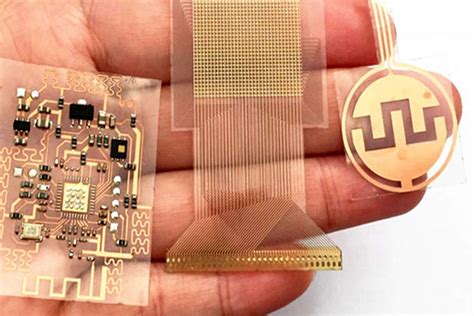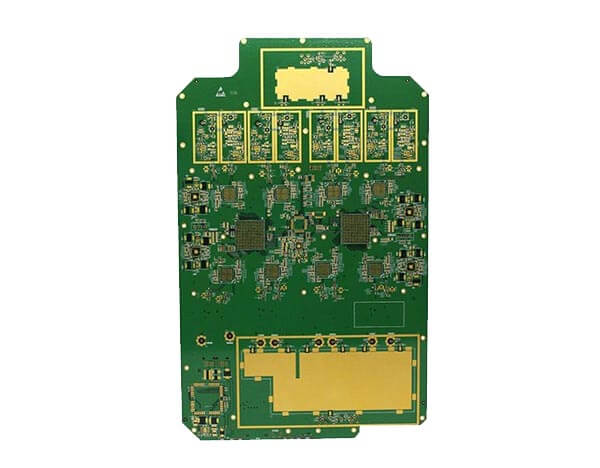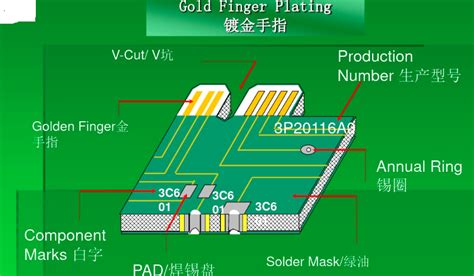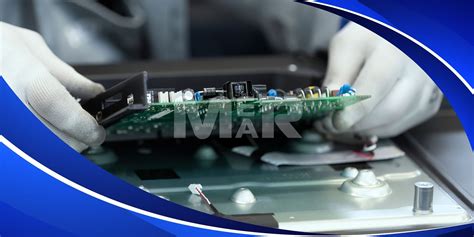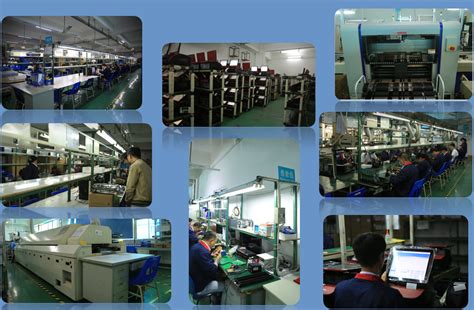Innovative Solutions from a Top Flexible Printed Circuit Board Manufacturer
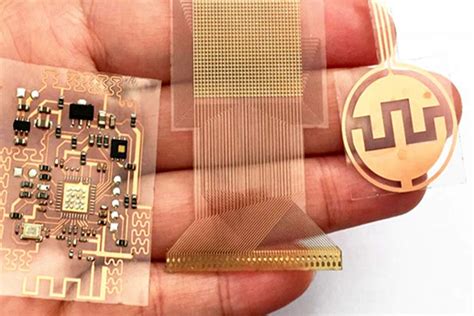
Key Takeaways
Understanding the nuances of pcb manufacturing can significantly influence your decision when selecting a partner for your electronic projects. By exploring the advantages of flexible PCBs versus traditional rigid boards, you gain insight into how these advanced solutions contribute to enhanced functionality while meeting the demands of modern electronics. As you delve into innovative design techniques, keep an eye on how leading pcb manufacturing companies implement these strategies to not only streamline production but also optimize performance for compact and intricate devices.
In addition to performance, understanding the pcb manufacturing cost is crucial for your budgeting. This knowledge can help you make informed choices and align with manufacturers who prioritize quality assurance in their production processes. The pcb manufacturing business is rapidly evolving, embracing sustainable practices to not only meet industry standards but also appeal to a more environmentally conscious market. As you navigate this landscape, consider checking leading manufacturers and their innovative approaches at Andwin PCBA. Here, you can find further insights into how these players are shaping the future of flexible printed circuit boards and enhancing their own offerings through strategic innovations.

Understanding Flexible Printed Circuit Boards: A Comprehensive Overview
Flexible printed circuit boards, or FPCBs, are innovative components that serve a pivotal role in the evolving landscape of modern electronics. You may find that they offer numerous benefits compared to traditional rigid circuit boards, such as increased design versatility and the ability to fit into compact spaces. Their unique flexibility allows manufacturers to create intricate designs that adapt to various environments, making them indispensable in devices where space and weight are critical considerations.
When you engage with pcb manufacturing companies, it becomes essential to understand how these specialized boards are crafted. The pcb manufacturing cost can vary widely depending on factors like materials, complexity, and volume, impacting the overall budget for your projects. Engaging a reputable pcb manufacturing business ensures that both quality and performance are prioritized—this is particularly relevant when considering the rigorous requirements of high-tech applications.
"The right flexible PCB can catalyze innovation in product design while meeting performance standards."
This highlights the importance of choosing a knowledgeable partner in pcb manufacturing who can provide insights into current techniques and future trends within this field. As technology continues to advance, staying informed about the capabilities of flexible printed circuit boards will be crucial in maintaining a competitive edge in your industry.
The Advantages of Using Flexible PCBs in Modern Electronics
Flexible printed circuit boards (PCBs) offer numerous advantages that make them increasingly popular in modern electronics. One of the key benefits is their ability to conform to various shapes and sizes, allowing for innovative designs that traditional rigid boards cannot accommodate. This flexibility not only helps in reducing the overall size and weight of electronic devices but also leads to increased design efficiency. Furthermore, the integration of flexible PCBs can significantly lower pcb manufacturing costs by minimizing assembly time and simplifying wiring complexities, ultimately resulting in a more streamlined pcb manufacturing business process.
As you explore the capabilities of flexible PCBs, it’s essential to recognize how they enhance performance. These boards facilitate improved signal integrity by reducing the number of interconnections and providing a more stable electrical pathway. Additionally, their robustness allows them to withstand harsh environments typically found in applications such as automotive and medical devices—areas where reliability is paramount. Ultimately, choosing flexible PCBs can provide you with a competitive edge in your projects, ensuring your products maintain the highest quality and functionality standards while adapting to evolving technological demands. When considering a move toward flexible solutions, think about how partnering with experienced pcb manufacturing companies can further optimize your design approach and contribute to your success in the market.
Innovative Design Techniques in Flexible PCB Manufacturing
The pcb manufacturing landscape is continuously evolving, and innovative design techniques play a pivotal role in enhancing the effectiveness and reliability of flexible printed circuit boards (PCBs). One of the primary strategies utilized by pcb manufacturing companies is the integration of advanced computer-aided design (CAD) tools. These tools allow for intricate layouts that optimize space while ensuring adequate electrical performance. Moreover, techniques such as embedded passive components are becoming more prevalent, allowing manufacturers to reduce size and weight while maintaining high functionality.
Another significant approach is the use of layer stacking, which permits more complex circuit designs without compromising on performance. By carefully engineering the layers within a flexible PCB, you can achieve better signal integrity and reliability, essential for modern electronic applications. Additionally, adopting materials that have superior thermal stability enhances durability, which is crucial in treating heat-sensitive applications.
| Design Technique | Description | Benefits |
|---|---|---|
| Advanced CAD Tools | Utilizing software for detailed layout optimization | Increased accuracy and efficiency |
| Embedded Passive Components | Integrating components directly into the PCB | Reduced size and enhanced functionality |
| Layer Stacking | Arranging multiple layers to create complex designs | Improved signal integrity and reliability |
| Thermal Management Materials | Using materials with excellent heat resistance | Enhanced durability in high-temperature settings |
In today’s fast-paced pcb manufacturing business, these innovative techniques not only facilitate the creation of superior products but also significantly influence the pcb manufacturing costs. By streamlining processes and utilizing effective design strategies, you can expect a better return on investment while delivering top-notch products that meet consumer demands. Embracing these innovations ensures that you stay competitive in an industry that values efficiency and performance above all else.

Meeting Industry Standards: Quality Assurance in PCB Production
Ensuring quality assurance in PCB manufacturing is critical for producing reliable and efficient flexible printed circuit boards. You should recognize that leading PCB manufacturing companies adhere to strict industry standards and regulatory requirements to maintain high levels of quality throughout the pcb manufacturing process. This involves rigorous testing and validation procedures, including thermal cycling, mechanical stress tests, and electrical performance assessments. By implementing quality control measures at every stage of production, these companies can minimize the risks associated with defects and failures, which is essential for maintaining customer satisfaction and trust. Additionally, understanding the pcb manufacturing cost helps in making informed decisions when partnering with manufacturers. Investing in a reputable manufacturer known for its commitment to quality can ultimately save you money in the long run, reducing the likelihood of product recalls or costly repairs. Ultimately, adopting these best practices ensures that your flexible printed circuit boards not only meet but exceed industry specifications, enhancing the overall performance of your electronic products.
Case Studies: Success Stories from Leading Manufacturers
In exploring the achievements of pcb manufacturing companies, several noteworthy success stories stand out. One prime example involves a leading manufacturer that integrated flexible printed circuit boards (FPCBs) into its product line, effectively demonstrating the benefits of advanced pcb manufacturing techniques. By utilizing innovative design methods, this company was able to significantly reduce the pcb manufacturing cost, all while improving the overall performance and functionality of its products. This not only led to enhanced product reliability but also gave them a competitive edge in a crowded market. Another case highlights how a different manufacturer embraced sustainable practices within their pcb manufacturing business. By focusing on eco-friendly materials and processes, they not only met growing consumer demands for environmentally responsible products but also cut down on waste during production. These success stories underscore the importance of adaptability and innovation in the realm of pcb manufacturing, showcasing how companies can thrive by embracing new technologies and methodologies. Ultimately, these examples offer valuable insights into how effectively leveraging flexible printed circuit boards can propel your projects to new heights.
Future Trends in Flexible PCB Technology
The field of flexible printed circuit board technology is rapidly evolving, driven by an insatiable demand for miniaturization, lightweight designs, and enhanced functionality in modern electronics. As you explore these emerging trends, it becomes clear that the shift towards more innovative PCB manufacturing processes is not just a response to market needs but also a glimpse into the future. Manufacturers are now focusing on developing high-density interconnects and effective use of materials to reduce PCB manufacturing costs, while maintaining quality and performance. PCB manufacturing companies are investing significantly in research and development to create flexible circuits that are not only thinner but also capable of supporting more intricate electronic designs. As consumer electronics become increasingly sophisticated, the ability to implement advanced functionalities into compact spaces becomes paramount. Furthermore, advancements in materials science are paving the way for flexible PCBs with enhanced thermal and electrical performance, catering to the demands of newer applications such as wearable technology and IoT devices. By understanding these future trends in flexible PCB technology, you can better position your business to leverage these innovations effectively.
How to Choose the Right Flexible PCB Manufacturer for Your Needs
When embarking on the journey to select a flexible printed circuit board manufacturer, it’s essential to consider several key factors that influence your project’s success and the pcb manufacturing cost. Begin by assessing the manufacturer’s experience and reputation in the industry; a pcb manufacturing business with a solid track record often indicates reliable services and quality products. Next, take into account their ability to provide tailored solutions that align with your specific needs, as this adaptability can significantly impact functionality. Additionally, inquire about their production capabilities and quality control measures to ensure they meet your standards; this can safeguard against potential failures in your end products. Engaging with companies that embrace innovative design techniques can give you an edge in product development. Lastly, evaluate their customer support and communication practices, as transparent interactions are crucial in navigating any challenges that arise during the manufacturing process. By focusing on these elements, you’ll enhance your chances of partnering with a leading pcb manufacturing company that meets both your requirements and expectations effectively.
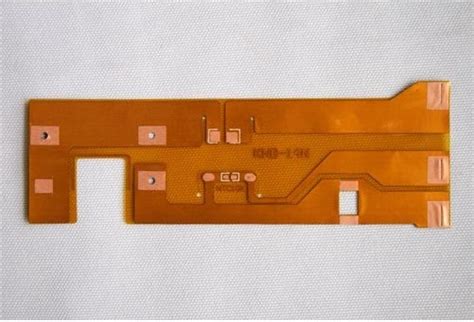
Sustainable Practices in Flexible Circuit Board Manufacturing
In today’s environmentally-conscious market, sustainable practices in flexible circuit board manufacturing are gaining traction, highlighting the importance of responsible production techniques. You might be interested to learn how leading PCB manufacturing companies are minimizing their ecological footprint through innovative processes. For instance, the adoption of advanced materials reduces waste and enhances the recyclability of products. Many manufacturers are also investing in energy-efficient technologies that lower the overall PCB manufacturing cost, directly benefiting both the environment and your budget. By choosing a manufacturer committed to sustainability, you can ensure that your products not only meet compliance standards but also align with ethical sourcing and production practices. Moreover, understanding these sustainable approaches can strengthen your own pcb manufacturing business, as consumers increasingly favor products from companies that prioritize environmental stewardship. Embracing these methods not only contributes to a healthier planet but can also enhance your brand reputation and drive future growth.
Conclusion
As you explore the world of flexible printed circuit board manufacturing, it becomes evident that these components are at the forefront of technological advancement. By integrating flexibility and compact design, leading pcb manufacturing companies are not only enhancing the functionality of electronic devices but also contributing to a significant reduction in pcb manufacturing cost. This optimization enables your products to maintain high performance while adhering to standards that meet customer expectations. The rise of innovative design techniques in this realm demonstrates a commitment to quality and efficiency, essential features for any successful pcb manufacturing business. As you consider the future implications and applications, you can appreciate the role these manufacturers play in shaping modern electronics, driving sustainable practices, and delivering solutions that ensure your competitive edge in a rapidly evolving market.
FAQs
What are flexible printed circuit boards (PCBs)?
Flexible printed circuit boards, or flexible PCBs, are circuitry that can bend and flex while still functioning effectively. They are often used in compact and lightweight electronics.
How do I choose the right flexible PCB manufacturer?
When selecting a flexible PCB manufacturer, consider their experience, production capabilities, and customer reviews. Ensure they meet your required standards for quality and performance in pcb manufacturing.
What factors influence the cost of PCB manufacturing?
The pcb manufacturing cost is influenced by several factors, including material type, design complexity, quantity produced, and the specific features you require in your circuit boards.
What advantages do flexible PCBs offer over traditional rigid PCBs?
Flexible PCBs provide several advantages such as reduced weight, space efficiency, and greater adaptability, enabling designs that can withstand movement while maintaining electrical connections.
How can I find reliable PCB manufacturing companies?
To find trustworthy pcb manufacturing companies, research their track record in the industry, look for certifications, and consider requesting samples to assess quality before making a decision.
Are there sustainable practices used in PCB manufacturing?
Many modern manufacturers are adopting sustainable practices such as using eco-friendly materials and minimizing waste during the pcb manufacturing business, contributing to a more environmentally responsible production process.

